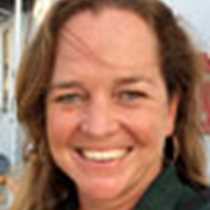Today we explored the Hebridean Islands of Mull and Eigg, taking a deeper look at how they were formed. Mull is mainly volcanic in origin, composed of thick layers of basalt lavas that create a stepped landscape dating back to the Tertiary period when the North Atlantic was forming. Lavas were erupted from fissure volcanos that were active about 60 million years ago, and the topography was further sculpted by glacial erosion during the last Ice Age.
We sailed into the tranquil waters of the Sound of Mull towards the colorful town of Tobermory, built as a fishing port in the late 18th century. Whereas some of us chose to visit a local whisky distillery, others took a walk out to the Tobermory Lighthouse with a local geologist, learning about the formation whilst also enjoying wildflowers and birds. We discovered yet more interesting geology on our next stop, the Isle of Eigg, which we explored against the backdrop of An Sgùrr, an imposing inselberg (“island mountain”) that resulted from viscous pitchstone lava that flowed from an erupting volcano, filling a river valley. The substrate surrounding the flow gradually eroded, leaving what is essentially a mold of the ancient valley.
We celebrated a wonderful day of learning and discovery with a pint at the most remote pub on the British mainland, the community-owned Old Forge, in Inverie, Knoydart Peninsula.







